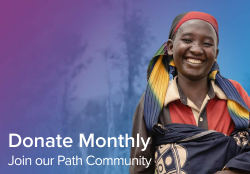Staff Reflections
Sharing Hospitality Along The Path
People often reflect on life as a journey. Along the path, we encounter roadblocks, delays and detours — passages that seem a little too narrow and mountains that appear too steep to climb. Over hills and down through valleys, we live one day, one moment, one breath at a time.
When the complicated twists and turns of our own journeys become a lot to manage, it’s hard to see past our own challenges and observe the difficult roads others must travel. But on this path, our faith calls us to move steadily forward — responding with open eyes and tender hearts.
Last month, I joined World Relief as the new Program Lead for The Path community — community made up of compassionate women and men who give monthly to World Relief to bring lasting change to people and communities in need. It is a privilege to walk alongside this community as we bear witness to hope giving way to healing, calamity encountering compassion and suffering colliding with lasting solutions.
I recently watched this devotional from Ann Voskamp and I wanted to share a short clip of it with you today. Ann shares her conviction that the authenticity of our faith is demonstrated in our hospitality and compassion towards those in crisis, and she invited us to walk alongside a world in need. I invite you to listen to Ann’s words and consider how we can take this journey together, showing hospitality and sharing God’s love with each person we encounter along The Path.
Let’s take this journey together. When you join The Path in September, your entire first year of gifts will be matched dollar for dollar up to $100,000! Only a few days remain to unlock this challenge. Will you join us on The Path to lasting change and see your impact doubled today?
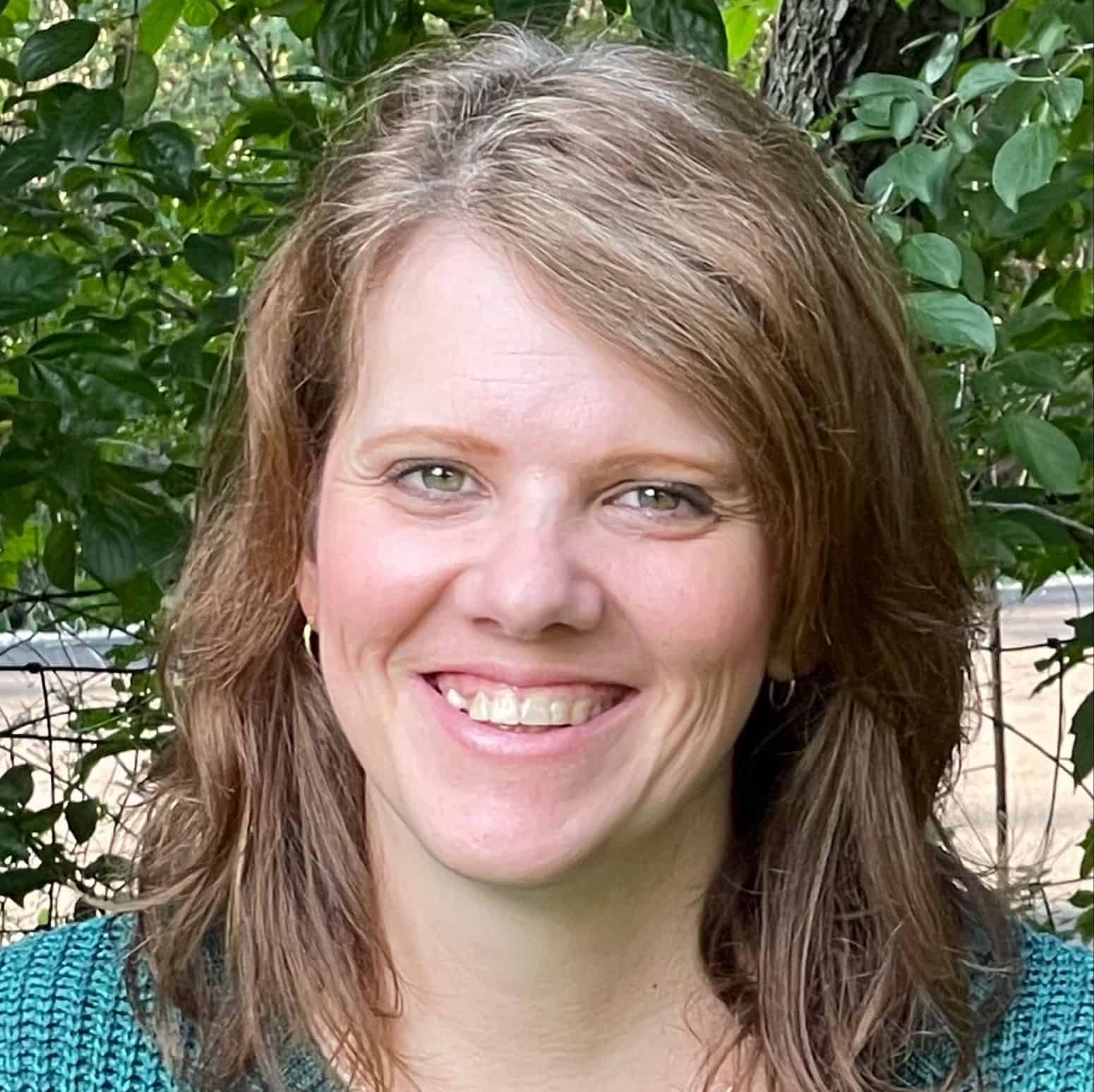
Denise Kersey serves as The Path Lead at World Relief. With a background serving in communication roles for missional organizations, she is passionate about connecting people with opportunities to live out their call to love and serve others.
Loving Your Neighbor is a Key Part of Being a Good Citizen
On September 17th, U.S. Citizenship and Immigration Services invites “Americans to reflect on the rights and responsibilities of citizenship and what it means to be a U.S. citizen.”
Today, on Citizenship Day, World Relief’s Karen Spencer, who recently became a U.S. citizen herself, reflects on what her journey to citizenship has taught her about loving our neighbors and being a good citizen.
My Story
Growing up in a small city in central Canada, I was surrounded by immigrant families who openly shared stories of endurance and escape, now embraced by a new country to call home. These families immigrated from places like Ukraine, Hungary, Poland, Chile and Vietnam.
Most of my classmates were first or second-generation Canadians whose parents or grandparents warmly welcomed me into their homes, sharing interesting foods before sending me off with well-wishes in varying languages or accents.
As a second-generation Canadian myself, I clung to the tidbits of my Scottish, French and British family histories that I caught from conversations and scrapbooks. The movement of people fascinated me, so it wasn’t a surprise that I looked beyond my own country as a young adult to study in the United States. What I did not expect, however, was to fall in love with an American, marry and become an immigrant myself!
Becoming a Citizen
A few years ago, I worked with a World Relief Immigration Legal Specialist to pursue naturalization. Throughout the process, I was impressed by the expectation for me to have already displayed certain characteristics of citizenship: good moral character, adhering to the law and demonstrated service in my community.
But what intrigued me, however, was how community awareness and action were also strongly emphasized as required responsibilities for me and my fellow new citizens.
Beyond the application process itself, the naturalization ceremony emphasized giving back to our new country through acts of service. Various organizations had set up booths in a type of information fair to help us immediately find ways to serve the community. The definition of citizenship as the qualities that a person is expected to have as a responsible member of a community, was on full display.
This experience left me to wonder, do most other Americans realize this moral obligation as citizens? Or do many consider this responsibility to only apply collectively rather than personally?
Moreover, my faith compelled me to think even deeper — could it be that God’s call for me to love my neighbor is a key part of being a good citizen?
An Unsettling Reality
Lately, I have felt unsettled as I’ve watched the news and considered all the events that have forcibly displaced so many women, men and children from their homes: fires, floods, hurricanes, famine, political uprisings, war.
More than 82 million people currently live their lives displaced from their homes — some have been temporarily internally displaced, like those in Louisiana affected by Hurricane Ida’s devastating floods, or those in Haiti affected by the recent earthquake that happened in August.
Others have been evacuated from their countries on military planes as we witnessed in Afghanistan. Even more walk or run to the borders of neighboring countries for shelter in temporary refugee camps, wanting to return home, but most often left stateless for years, as fewer than one percent are invited for permanent resettlement in a third country — hopes and dreams are put on hold as the basic need for survival and safety dominate decisions.
If you’re like me, all of this can feel overwhelming, leaving you at a loss of what to do or how to help.
But as both an immigrant and naturalized citizen, I have learned that you and I hold a unique position of power, influence and responsibility, both as individuals and collectively. We can make a difference in the lives of our neighbors near and far, and as citizens of the United States, we have both a right and responsibility to do so.
From Awareness to Action
For most of my adult life, I have prayerfully discerned and sought out opportunities to love my neighbors next door, across town and around the world. But it wasn’t until I came to World Relief that I found my way and my voice as both an immigrant and naturalized citizen, to move from awareness to action — specifically when it came to meeting the needs of my immigrant neighbors and people forcibly displaced.
What I love most about my work at World Relief is that I get to invite others to join me. You and I don’t have to be stuck, distraught by the headlines. With World Relief, we can move to meaningful love-in-action through advocacy, giving financially and relationally welcoming and walking alongside our newest neighbors.
Beyond all of the ways to do this with World Relief, each of us can start by recognizing that our neighbors near and far are image-bearers of God. We can look people in the eye with care and concern, truly seeing them and their situation and recognizing without judgment that we might be in a position to help.
Individually, we can pray about what God is inviting us to do personally, or who He is inviting us to befriend, showing love in word and deed. Whether it’s joining a World Relief Good Neighbor Team, volunteering at a local library or preparing a meal for your neighbor whose spouse is going through cancer treatment, there are limitless opportunities for us to love our neighbor as Jesus so beautifully lived out throughout scripture.
On Citizenship Day, and every day, let’s demonstrate true citizenship by actively loving and welcoming our neighbors, together.

Karen Spencer is World Relief’s U.S. Marketing Partner and serves U.S. offices in the area of identity and messaging. She previously served as Mobilization Director for World Relief in Memphis, where she lives. She is a connector of people, places, passions and purpose.
Making Ripples with Job Readiness
For every person we encounter, we make an impact– a ripple in their life whether small or big. You may never know just how strong that impact was or how far it spread into someone’s life, but it is always present.
I applied to be an intern at World Relief because I hoped that through working with the organization I could make a ripple in the life of someone else. I never knew it could be something that would lead me to the front doors of so many refugees here in the Quad Cities.
At my interview, I was asked if I thought I could help develop and run a Job Readiness program.
Utilizing the knowledge of many throughout the Moline office and building off of the classes developed by other World Relief communities, I put together a short presentation to help orient newly arrived refugees as they enter the American workforce. That was the easy part.
Then came the second, and far more important, aspect of the program– presenting to the newly arrived refugees. I have been welcomed across doorsteps and into living rooms; I have waved hello to little kids peeking in; and I have exchanged smiles and well wishes across many languages.
It is as much about sharing what I know and have learned about being prepared for the workplace as it is about making connections with the community of people World Relief serves.
Throughout the year, I hope to continue working with the new arrivals and reaching across the linguistic and cultural barriers we may have to help us both grow– me as someone who wants to proceed with a career in humanitarian work, and them as they find new career paths in the United States.
And, hopefully, I will be able to revisit those I have already met for new conversations and a part two to the program. I hope that the ripples I make in their lives continue to be passed onto others as I carry on with the ripples they have made in my life.
Written by Alyssa Twilbeck
Attending to God’s Creation
Today, on World Humanitarian Day, we join organizations from across the globe to bring awareness to the human cost of today’s climate crisis and the immediate consequences this crisis is having on the world’s most vulnerable communities. At World Relief, we believe creation care is one of the core tenets of Christian witness, and is an integral part of caring for the world’s most vulnerable. That’s why we are committed to working toward environmental stewardship and climate-sensitive policies both internally and throughout our programs around the world.
And God said, “Let the water teem with living creatures, and let birds fly above the earth across the vault of the sky.” So God created the great creatures of the sea and every living thing with which the water teems and that moves about in it, according to their kinds, and every winged bird according to its kind. And God saw that it was good. Genesis 1:20-21
In 2017, I accompanied World Relief Kenya Country Director Elias Kamau to visit Turkana County. The people of Turkana have been living in this area for hundreds of years, relying largely on their livestock for food. What I saw on my trip was devastating. Over 90% of the livestock in the county were dead. Children were suffering from malnutrition. And after two failed rain seasons, the Turkana people were starving.
This is a far cry from the picture of God’s creation we see in Genesis 1 – a picture of life in abundance, a creation overflowing with birds, fish and animals of every kind. A world that God declared very good.
Creation is both a beautiful gift for our pleasure and joy, and an essential part of the very sustainability of our planet. Yet sadly, the incredible biodiversity that is celebrated in Genesis 1 is no longer as visible as it once was.
Though some may still dispute the degree to which climate change is being caused by humans, few would dispute that it is impacting our world. Wherever you may stand on this issue, as Christians, we should be able to agree that scripture is clear. God gave humans dominion over the earth “to work it and take care of it ” (Genesis 2:15).
Indeed, creation care is one of the core tenets of Christian witness. But today, there is mounting evidence that we are failing badly in this responsibility.
In his new Netflix documentary, “A Life On Our Planet,” natural historian David Attenborough, now 93, documents this decline and the reasons for it in vivid and disturbing terms. We, God’s chosen stewards of His Creation, are quite literally destroying the creation that makes our own lives possible, living apart from nature rather than being a part of it, and thus bringing forward what could be the sixth mass extinction event in the history of the world if we continue on current trends.
The Crisis
If that seems exaggerated, consider the following. In 1937 there were 2.3 billion people on the earth and 66% of the world was wilderness. By 1997 there were 5.7 billion people and 46 % of the world was wilderness. Today, in 2020 there are 7.8 billion people and only about 35% of the world remains as wilderness.
This matters because the sustainability of our planet and our lives depends on the delicate balance of rainforests, grasslands, oceans, ice caps and the rich biodiversity contained in them. As the planet warms, as populations grow and as we destroy wilderness to fuel our consumption-oriented lives, the cycle of destruction accelerates. As a result, since the 1950s, wild animal populations have halved. And it’s expected that unless we make dramatic changes, in the next twenty years the Amazon rainforest will become dry savannah and the arctic will be free from ice in the summer.
At World Relief, we see the effects of this directly in our work around the world, as climate change shifts long-term weather patterns, bringing more destructive climatic events such as severe flooding. This especially impacts the poorest of the world’s countries, where food and water insecurity and environmental disasters have forced migration and increased conflicts and violence all across the developing world.
While in Turkana, expected rains have been replaced by months of extreme drought and resulting famine, we’ve seen the contrary in Malawi and parts of Sudan where severe flooding has been far worse than in years past. In places like Haiti and Nicaragua, we’ve seen an increase in both the frequency and intensity of tropical storms and greater suffering as a result. Most recently, we experienced the devastating effects of the worst hurricane season on record across Central America as Hurricane’s Eta and Iota struck the region just weeks after one another, causing extreme vulnerability and devastation. And on our U.S. Southern border, we’re beginning to see an uptick in environmentally-induced migration as families flee environmental pressures in search of a safe place to rebuild their homes.
Now What
Much of our programming aims to combat the consequences of this devastating climate change.
In countries across Sub-Saharan Africa, our Agriculture for Life programming uses conservation techniques that help reverse the man-made consequences of over-farming and deforestation. By working with the land rather than depleting it, we are finding different ways to farm that are better for the environment and give farmers better long-term crop yields.
In Turkana, we are also working on range rehabilitation through the development of Conservation Areas. These areas are fenced-off portions of communal land that are protected from livestock and treated with high-quality grass seeds for a period of time. When the dry season arrives or drought hits, the conservation areas often provide the only viable pasture for livestock to feed on, ensuring selected herds are cushioned from the drought shocks and that the Turkana people can continue to rely on their livestock for food and milk through harsh periods of drought and famine.
In Haiti, we have just begun a new waste management project in partnership with Tearfund UK and Arris Desrosiers — a social enterprise company based out of the capital of Port-Au-Prince — which aims to change beliefs and behaviors around waste management and recycling through lessons in creation care and environmental stewardship. The project hopes to connect over 15,000 beneficiaries to proper waste collection and recycling, significantly reducing the waste flowing into the ocean and improving the health and well-being of thousands of families in the Port-au-Prince area of Carrefour.
In the coming years, World Relief is committed to working toward environmental stewardship and climate sensitive policies both internally and throughout more of our programs around the world.
Our Responsibility
In truth, it will take the whole world; governments, scientists, businesses and each one of us to reverse the trends. We all have to do our part.
We must not rest in denial just because the impacts of climate change are not on our own doorstep. That denial fails to honor God and the wonders of his creation.
Change will only happen when our own hearts are moved so that we have eyes to see and ears to hear. It will happen when we cease to allow climate change and care for our environment to be seen purely through the lens of politics or economic self-interest and bow in submission to our duty of care for God’s creation — a creation to which we are all connected; when we reduce economic inequality and education disparities in the developing world so that we can bring population growth under control; and when we recognize what we do “over here” affects people “over there”. Whether in small or big ways, each one of us can make a difference in building a better world today, tomorrow and for generations to come.
It is time — if not past time — to attend to our Lord’s business.
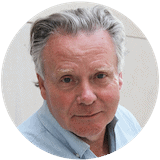
Tim Breene served on the World Relief Board from 2010 to 2015 before assuming the role of CEO from 2016-2020. Tim’s business career has spanned nearly 40 years with organizations like McKinsey and Accenture where he was the Corporate Development Officer and Founder and Chief Executive of Accenture Interactive. Tim is the co-author of Jumping the S-Curve, published by Harvard Publishing. Tim and his wife, Michele, a longtime supporter of World Relief, have a wealth of experience working with Christian leaders in the United States and around the world.
How Do You Measure What Happens Inside the Heart?
I will never forget the day I sat in the living room of a newly resettled Syrian refugee in the country of Jordan. Next to this young mother was her nine-year-old daughter who had joined her in fleeing the slaughter happening in their village amidst the Syrian civil war. They were now safe in Jordan, but hope still seemed lost.
The daughter had a life-threatening congenital heart defect, and there seemed no way of getting the medical care needed to treat her condition. Despair turned to joy, however, when the local Christian church in Jordan, aided by World Relief, came alongside this mother and provided both access and funding for a life-saving heart operation.
The gratitude I witnessed could not be captured by a number or expressed in human speech. It could only be fully taken in by looking into the eyes of a mother telling the story of rescue by the very people she had been taught to fear.
One of the great privileges of my role has been to sit in the homes of those we serve and hear in their voices the “measures” that could never be contained in a number. For over 75 years, World Relief has brought relief to suffering peoples around the world. Whether in disaster relief, global health, child development or our work among displaced people — we measure our progress to improve our services and to demonstrate the power of our work to those who so generously give to make it possible. Measuring the impact of our work matters. But how do you measure what happens inside the heart? How do you assign a number to gratitude, to growth, to the awakening of a soul?
I have often tried to imagine the joy inside the heart of a young girl in Rwanda when she is told that she too will now go to school! No longer are the uniforms, books and pencils for her brothers only. She too will learn and dream and expand her horizons. Her smile that beams with pride and expectation will make us cry for joy along with her, but the measurement of that joy will remain intangible.
And what of the person paralyzed from birth who has been kept out of sight due to family shame? Imagine what it is to have been hidden away, neglected and perhaps abused because you were seen as an embarrassment, or worse yet a curse. How do you measure what happens in a heart when, through the teachings of scripture and the support of a church congregation, parents begin to see the image of God in all their children, replacing exclusion with a warm embrace? Can you measure the gratitude, the sense of belonging and the love that finally courses through that child’s veins? What would it be like to now join the family and community as one worthy of “special honor” as taught by the scriptures?
There is an unspeakable beauty in the bright eyes of children who receive the nutrition their young bodies need, and who finally feel safe because the violence in their home has stopped, their parents now communicating with and valuing one another after participating in a Families for Life program. In the same way, only our eyes can capture the elegance and dignity of a woman formerly trapped by the fear of sexual violence now walking in confidence because her community, empowered by the church, rose up to say “No more!”
This is a story beyond words. One in which, household by household, the transformation of the body and soul brings harmony to homes, congregations and entire communities because the fullness of the good news of God’s love has been released.
How I wish you could sit in the dusty villages, crowded refugee camps and apartments of newly resettled refugees and hear the stories of change that your gifts have helped create. How I wish you could take in the power of your prayers, your gifts and your advocacy so that you would know the measure of your work — one that no number could ever convey.
Numbers do indeed tell one story, and a powerful one at that. But they cannot tell of joy, of awakening, of gratitude and of transformation.
Of course, this narrative is far from one-sided. Each day, we are blessed to also witness the mutual transformation that occurs as you engage in this kingdom work alongside us. Much of the beauty found in this story is that we also get to tell those we serve of your joy, your gratitude and your transformation through this work.
I think of George who once joined me in Rwanda. After watching pastors of different denominations working together in mutual love, and observing the healing and forgiveness after the genocide, he turned to me with tears in his eyes and said, “I have been in Christian ministry and philanthropy for forty years and I have never seen anything like this.”
Or of Rodney, whose view of refugees and other immigrants had grown cold and closed-off. He experienced transformation when a World Relief staff member spoke at his church. God answered his prayer for openness in a new and unexpected way. He began to see the Imago Dei found in each person who came to the U.S. and felt compelled to be a part of welcoming them as they rebuilt their lives in a new country. Today, Rodney is an active volunteer in Memphis.
These are the measures of the heart — measures that remain intangible to any numeric value we could ascribe to them; but that will, to me, forever signify the incredible work we’ve done together over the last 75 years. It has been a privilege and a blessing beyond measure.
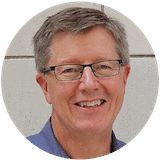
Scott Arbeiter retired from World Relief in 2021 as president after serving the organization in various roles for more than two decades and is a former pastor of Elmbrook Church in Brookfield, Wisconsin.
Trading citizenships: Why I decided to become an American
Throughout July, we’ve been focusing on citizenship and what it means to our friends in the immigrant community about what it means to them to be an American. As we close out the month, we wanted to share one last story with you from our operations manager, Bishnu, who is originally from Nepal.
As Nepalis
I came to the United States in 2005 for the first time. It was just a two-week visit for a conference in Arizona. I visited a few more times until we moved to the US permanently as a family in 2011 through the Diversity Visa Program, also known as the green card lottery.
The primary reason for our move to the US was our children’s schooling and better educational opportunities for them.
However, it was quite a dilemma for me and my wife to become US citizens since Nepal has no dual citizenship policy. It was a big decision for us. It took us a couple of months to finally decide to apply for citizenship. We realized we needed to go for it if our children wanted to become American citizens and stay here in the US.
Soon after, we submitted our application for naturalization and had our fingerprints taken. This process took us around 12 months. We all started preparing for the interview, which requires you to understand and answer any of 100 questions. It was a great opportunity to understand the US Constitution, the history and the responsibility of being a US citizen. Finally, we passed the interview without any problems.
We felt so proud to be citizens of the United States, taking our oath surrounded by people from 18 different countries from around the world. Once you become an American citizen, you have to report to the Nepali government and give up your passport if it hasn’t expired yet, therefore giving up our Nepali citizenship, but we felt that the benefits of being American citizens were worth it.
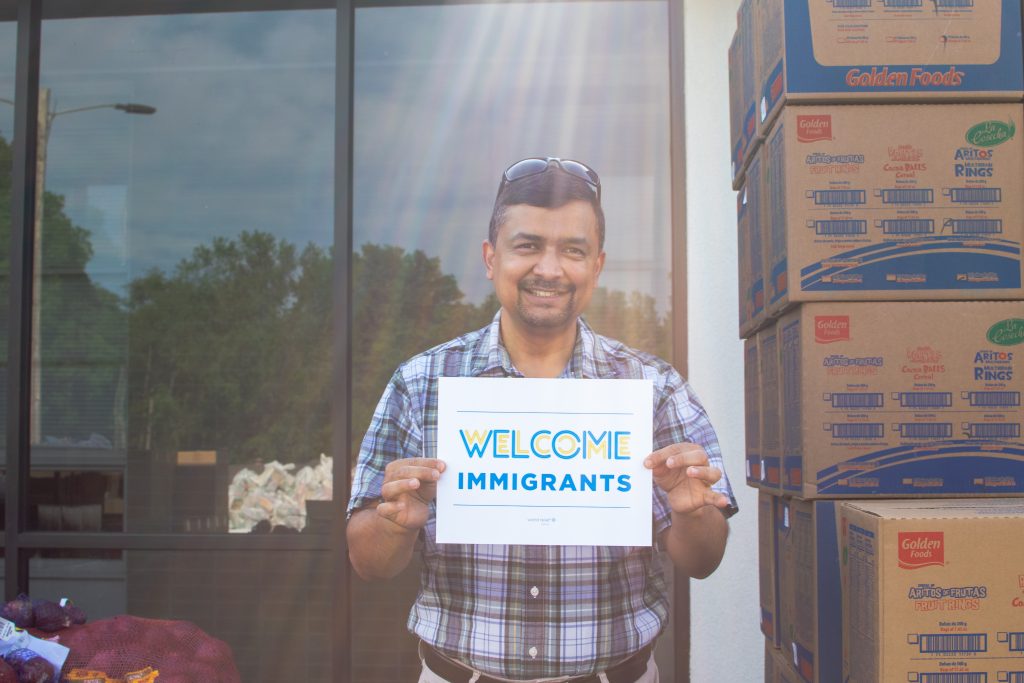
As Americans
First, our children have better educational opportunities, especially when applying for various college scholarships. Both of my children got full tuition scholarships. They are now about to finish college with no debt. It is a great blessing for us!
Second, one of my children desires to work with the federal government, which requires US citizenship.
Third, we had a hard time getting visas to visit many countries with our Nepali passports. Now, we can easily get visas, mostly on arrival, to those counties. It has given us the privilege to go anywhere in the world.
In fact, it was a strange experience when I traveled to Nepal with my US passport. I felt like a foreigner as I was told to stand in the line with other non-Nepali people and had to get a visa before entering the country. They granted me just a one-month visa in my first trip to Nepal as an American.
Before, we had always felt like second class citizens when we were living with permanent resident status in the US, but now we feel equal to all Americans. We were able to vote and elect the President and lawmakers of the country. It gives us great dignity and pride to be citizens of this great country!
Bishnu, thank you for sharing your story with us! It is a pleasure to work alongside you and to have you as a fellow American. If you want to help other immigrants on their road to American citizenship, join us as a volunteer.
My Time as a Remote Intern
Throughout four months of balancing remote work, a pandemic, periods of quarantine and college, I’m now at the end of my internship with World Relief Quad Cities.
During the past semester, I worked as a communications intern. Most of my projects were communication-based and included things like writing articles and creating social media posts. I also helped with some video editing, data entry, volunteering, and design work.
Completing an internship during a pandemic is a unique experience. For one, it was largely remote, although I was able to come into the office more towards the end of the internship.
That meant that I had limited contact with the staff and, sadly, never met a client that we serve. The closest I got to getting to know clients was talking with them on the phone for a couple of minutes. Despite having limited contact physically, I still felt like I was part of the team and making a difference in the organization for the people we help. Through emails, texts, phone calls and meetings, I was able to connect with the staff and get an idea of what it’s like to work at World Relief Quad Cities.
Without a doubt, the highlight of my internship was anytime I was able to go into the office. The work environment was always so positive and I loved getting to know and work with the staff in-person.
Right at the start of my internship, the diversity of the staff at World Relief was something I noticed and valued, and it was something I’d never experienced in a workplace before. There’s such a wide variety of people from different places with different backgrounds, and everyone brings something different to the team.
All of the staff members want to help immigrants and refugees in any way they can, and they do exactly that everyday. I saw how they all use their unique skills and backgrounds to contribute to that goal. They also often put in extra time and effort to help, often at no benefit of their own. That kind of generosity and desire to help others was amazing to work with and inspired me to do the same.
My time at World Relief Quad Cities helped me understand the kind of work they do and get a first look at the work environment. Before I interned here, nonprofit work was not something I had thought about pursuing. Now, I’m extremely thankful for the opportunity to intern at World Relief because it opened up the possibility of nonprofit work and new opportunities I could see myself pursuing after graduating college.
World Relief does so much good for the community and has such a big impact on the immigrants and refugees they help. By being an intern there, I also was able to utilize my skills and background to make a difference. The kind of work they do is really important, and my time at World Relief showed me how much I have to offer and how I can use my skills to give back to the community in a really meaningful way.
Written by Olivia Doak
Hope Because
The camelia behind our house started blooming in late January, causing me to wonder, “Does that happen often here in Seattle?” I’m new to the city and haven’t been through all four seasons yet, so I’m not sure. But seeing the blooms on that rainy Sunday morning got me to thinking about seasons.
Late winter is the season that most reminds me to look beyond what I see and think about what’s just out of sight. It is a season of potential.
When I see the tips of daffodils emerging or an early-blooming camelia, I don’t rejoice that spring has come because it hasn’t yet. But these little reminders that the roar of spring will soon unfold captures my imagination and invites me to consider the hope and potential of what’s to come in other areas of my life as well.
Something like this hopeful expectation has infected our team at World Relief. As we think about refugees who have been waiting for so long to be resettled, we have hope at the promise of an increased refugee ceiling. Like a gardener who sharpens tools and pores over seed catalogs in late winter, we are gearing up to welcome weary strangers whose long and halting journey to their new communities will likely resume in the year ahead. We pray for them as they wait. We pray and we hope.
Just on the other side of late winter comes spring — a season full of change.
There’s no need for me to dive into all the change we’ve experienced collectively this past year. I’m sure they’re springing to your mind even as you read this sentence. Instead, I’m wondering about the changes in your own life, your home, your ministry, your job, your health.
In losing the opportunity to meet together in person, I wonder if we’ve also lost the opportunity to share our stories with someone else as well, to turn our personal experiences into shared experiences. Do you miss that as much as I do? Or is that just an extrovert’s perspective?
As I’ve pondered these questions and the new season we are entering, I have found these meditations on change to be very helpful in transitioning to this new year, new season, new administration and new chapter of the pandemic. All of this change has given us a lot to sort through. Yet, at the same time, so many other things are standing still.
In this season of change, we find ourselves hoping for what’s on the horizon while still grieving the reality of what still is — the sickness, division, unresolved issues at our border and any number of unmet longings within our personal lives. It’s a lot to hold.
I’m reminded though, on the heels of Easter Sunday, that even in our waiting and in our grief we can still have hope. No matter what our changing circumstances may hold, we can have hope because God is faithful.
I hope you’ll take a few minutes to watch and listen to the meditation on hope that’s shared below. As you do, I pray you’d become more aware of how God is present in the current season you are in.
We are so grateful for the support you — our partners, our advocates our volunteers — have shown us in the past season, and we look forward to partnering with you in the new season ahead.
*Find more meditations like this one here
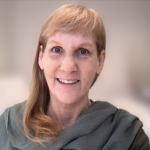
In March, 2020, Kim Hurst relocated to Seattle for her job as a Strategic Partnership Director, just in time to lock down with her husband for Covid19. Even without any face-to-face meetings quite yet, she feels privileged to be serving World Relief’s partners in the beautiful Pacific Northwest.
Systems Change in Seattle
As World Relief Seattle’s Executive Director and an immigrant myself, I have seen the razor-thin line between security and insecurity that many immigrants experience. Never was this more clear to me than this year, as our office rallied to serve those hardest hit by the COVID-19 pandemic.
As the pandemic wore on last year, we received many calls for help from our community — for help with navigating unemployment, for help finding work, for help with rent assistance and for help with the food insecurity many were facing.
World Relief Seattle’s Resiliency Programs Manager, Tahmina Martelly, jumped into action, along with Santa Pradhan, our Employment Manager. Both of them being women of color and women who have faced the refugee journey, they were hearing the need both at work and at home in their communities.
Without delay, the Employment Team united to help over 98 folks access unemployment benefits and many others get re-employed. The Resiliency team addressed the food insecurity issue in partnership with Hillside Church, where our Community Garden is located. Tahmina began to put the word out and people from all across the community began to show up with food. We formed a formal partnership with Northwest Harvest and began a weekly food distribution site— serving more than 800 families a week with food boxes that lasted 3-5 days.
One day, I went to check out the operations, first-hand. And it struck me that most of the folks in the cars were from our black, brown and immigrant communities. After 30 years of working in marginalized communities, I realized that they were the very same people that were in these lines whenever crisis hits. It disturbed me so much that I returned to my car crying and wondering how we could change the system, so that the next time a crisis hits, our communities could go to the store and buy their own food, not wait in lines at distribution sites.
As a Leadership Team, we decided that to change the system we needed to invest in two powerful and proven strategies to move people out of poverty— economic and educational empowerment. So this year, we’re planning to launch several “system change initiatives”. They will include a commercial/teaching kitchen, an Immigrant Entrepreneurship Academy for emerging businesses and support services for existing immigrant businesses. We are also going to continue investing in immigrant and refugee youth — making sure the curriculum in our Summer Academy is academically rigorous, provides academic support and prepares them for a bright future.
We might not be able to change the whole world, but this International Women’s Day and for Women’s History Month, the amazing women on our team, and I, hope to make a positive change in our small piece of the world!
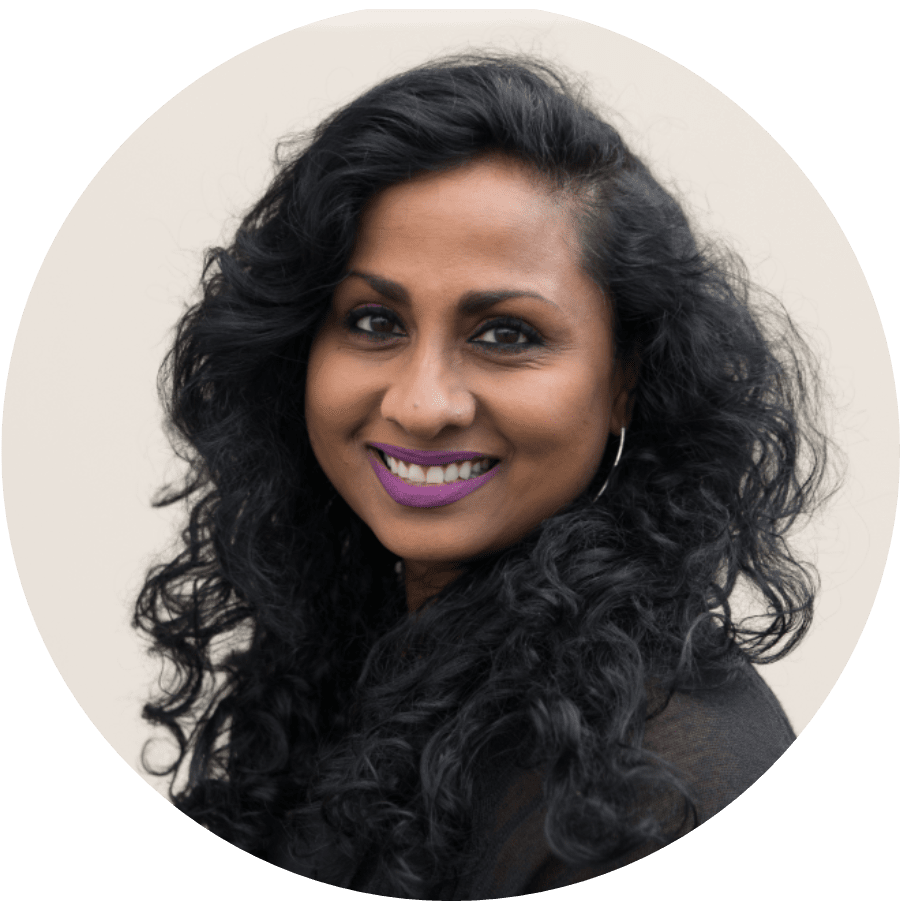
Chitra Hanstad began as Executive Director at World Relief Seattle in January 2017. Prior to this, she spent time in India consulting for Justice Ventures International (an anti-trafficking organization) on strategic planning and fund development and as a Philanthropic Advisor for the Seattle Foundation. While her career started in corporate advertising, public relations and media relations, she has spent most of the last twenty years working for local and international non-profits. Chitra has a passion for seeing at-risk communities thrive. She has served on many boards including Covenant World Relief & Urban Impact, and volunteers with The Stability Network.
Change: Reimagining the Future for Families
This new year, we’re making space to reimagine the future and build a better world together. In the final post in our Made for Change series, Joanna Kretzer Chun and Debbie Dortzbach recount the way World Relief staff reimagined their approach to HIV prevention.
This reimagining led to the creation of a new program known as Families for Life. Families for Life is a couple-strengthening curriculum that continues to be adapted and reimagined in countries around the world.
“Vulnerability is the birthplace of innovation, creativity and change.”
― Brene Brown
A Quandary
In 2011, World Relief staff were faced with a quandary. We were in the middle of partnering with a church in India to start a typical HIV awareness and prevention workshop. Although there had been a decrease in HIV cases across India, the rates in 2011 were still quite high. In spite of governmental efforts as well as those of World Relief and other organizations like it, we weren’t seeing the results we had hoped to see.
I (Debbie) remember being kept up at night feeling disturbed that we weren’t making progress. I was at a loss for how to make the workshop more engaging and effective. But all that changed one day when I was riding on the train.
I remembered a report that told the story about how truck drivers in India were motivated to change their behaviors, not because they were afraid of contracting HIV but because they wanted to return to their families.
That little word “family” stuck out to me, and I wondered, “If this is what is motivating truck drivers to change their behaviors, why aren’t we using that as a motivator in our churches to prevent HIV and strengthen families?”
Surely the strengthening of families was something the church was called to do.
I shared these thoughts with some other team members, and that day on the train we began dreaming about what this new program could be. Change can feel vulnerable and unknown. But we knew that in order to foster greater programming effectiveness, we’d need to embrace a change, and thus the Families for Life (FFL) model was born within World Relief.
A New Way Forward
Implementation in India quickly showed that this new idea for engaging couples to spark behavior change was a huge success and filled a gap that no one else had been addressing. We soon realized that FFL could not only be effective in preventing HIV but also in helping couples address other critical issues like marital conflict and even domestic violence.
Groups began multiplying organically within churches and the wider community in southern India to meet the demand, and over time FFL blossomed, expanding out to an additional six countries, reaching thousands of couples across the globe.
At its core FFL seeks to strengthen the couple relationship as a foundation for a healthy family and calls for participants to be open to change and reimagine their futures together.
Using a combination of story, scripture, interactive discussion and personal reflection, these FFL groups go through a journey of growth together. Couples learn important skills like valuing one another, communication and problem-solving as a foundation to adapt to life circumstances and different seasons of life.
As couples work through our scripture-based curriculum, harmful beliefs about marriage and family begin to shift. Gender-based violence, alcoholism, poverty, abuse and unfaithfulness decline. Husbands begin to include their wives in everyday decisions; wives are empowered to contribute to their families’ economic growth; parents come to realize the value of educating both girls and boys; families begin intentionally planning for their futures.
Reimagining Again and Again
Families for Life is a unique model in that it can be reimagined again and again to meet the needs of a particular community, growing with that community as couples reimagine the future for their families.
Recently, in Burundi, we reimagined FFL to meet an unmet need for Family Planning. The curriculum was adapted to include information on family planning in order to prompt conversations around healthy timing and spacing of births.
This adaptation, while small, sparked new collaboration between couples, church leaders and community health workers, seeking to increase use of family planning services to reach 120,884 beneficiaries including 9,600 couples and their children. This adaptation has been successful in cultivating a trusted partnership between couples and community health workers and church leaders leading to a stronger demand for family planning services in the community.
In Haiti, we learned that one church network we worked with began hosting couples events that included games nights and all-night worship events. Once a month these churches host a family Sunday where pastors create sermons from the FFL manual. This is a community where we are no longer working, but the fruits of FFL continue to grow.
In Haiti, we learned that one church network we worked with began hosting couples events that included games nights and all-night worship events. Once a month these churches host a family Sunday where pastors create sermons from the FFL manual. This is a community where we are no longer working, but the fruits of FFL continue to grow.
Being open to change takes courage. This is true on a personal level for the couples we come alongside, but it’s also true for organizations seeking to implement effective programs. Knowing that change can lead to growth and even larger impact, World Relief continues to innovate and reimagine the future for couples and communities across the globe.
Give today, and join us as we reimagine the future alongside couples and communities across the globe.
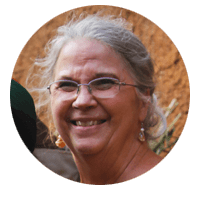
Debbie Dortzbach was privileged to raise her family in Kenya and spent most of her professional career in community health non-formal education training. During her many years working with World Relief, she helped to create and build the Families for Life model. She recently left full time work with World Relief and now enjoys reflecting, writing, serving her grandchildren, consulting, and advising.
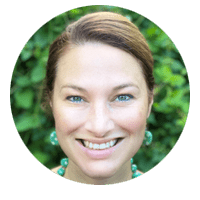
As the Director of the Program Resource Team, Joanna Kretzer Chun leads a team of global technical advisors that support World Relief international programs spanning Health and Nutrition, Savings, Agriculture, Child Development and Protection, and Couples’ Strengthening. With over fifteen years of international development experience, Joanna’s programming background spans the areas of gender mainstreaming, women’s empowerment, child protection, child development, faith leader engagement, and social norm change. Joanna holds Master degrees in Intercultural Studies and Family Studies from Fuller Seminary and a BA in Foreign Affairs from the University of Virginia. She resides with her family in Washington, DC.

